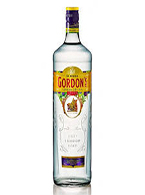Gin
Showing all 3 results

Bombay Dry Gin
Gin is a distilled alcoholic drink that derives its predominant flavour from juniper berries (Juniperus communis).
Gin originated as a medicinal liquor made by monks and alchemists across Europe, particularly in Southern France, Flanders and the Netherlands, to provide aqua vita from distillates of grapes and grains. It then became an object of commerce in the spirit industry. Gin emerged in England after the introduction of the jenever, a Dutch and Belgian liquor that was originally a medicine. Although this development had been taking place since the early 17th century, gin became widespread after the William of Orange-led 1688 Glorious Revolution and subsequent import restrictions on French brandy.
Gin today is produced in different ways from a wide range of herbal ingredients, giving rise to a number of distinct styles and brands. After juniper, gin tends to be flavoured with botanical/herbal, spice, floral or fruit-flavours or often a combination. It is most commonly consumed mixed with tonic water. Gin is also often used as a base spirit to produce flavoured gin-based liqueurs such as, for example, sloe gin, traditionally by the addition of fruit, flavourings and sugar.

London Dry Gin
Gin is a distilled alcoholic drink that derives its predominant flavour from juniper berries (Juniperus communis).
Gin originated as a medicinal liquor made by monks and alchemists across Europe, particularly in Southern France, Flanders and the Netherlands, to provide aqua vita from distillates of grapes and grains. It then became an object of commerce in the spirit industry. Gin emerged in England after the introduction of the jenever, a Dutch and Belgian liquor that was originally a medicine. Although this development had been taking place since the early 17th century, gin became widespread after the William of Orange-led 1688 Glorious Revolution and subsequent import restrictions on French brandy.
Gin today is produced in different ways from a wide range of herbal ingredients, giving rise to a number of distinct styles and brands. After juniper, gin tends to be flavoured with botanical/herbal, spice, floral or fruit-flavours or often a combination. It is most commonly consumed mixed with tonic water. Gin is also often used as a base spirit to produce flavoured gin-based liqueurs such as, for example, sloe gin, traditionally by the addition of fruit, flavourings and sugar.
